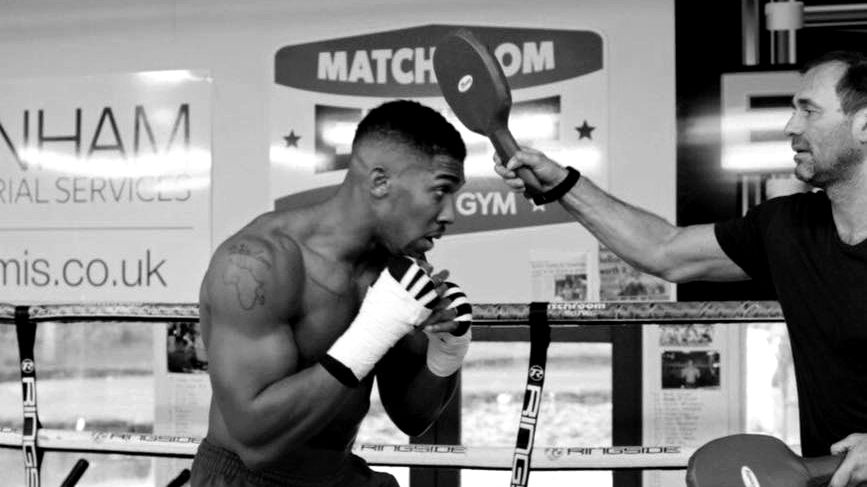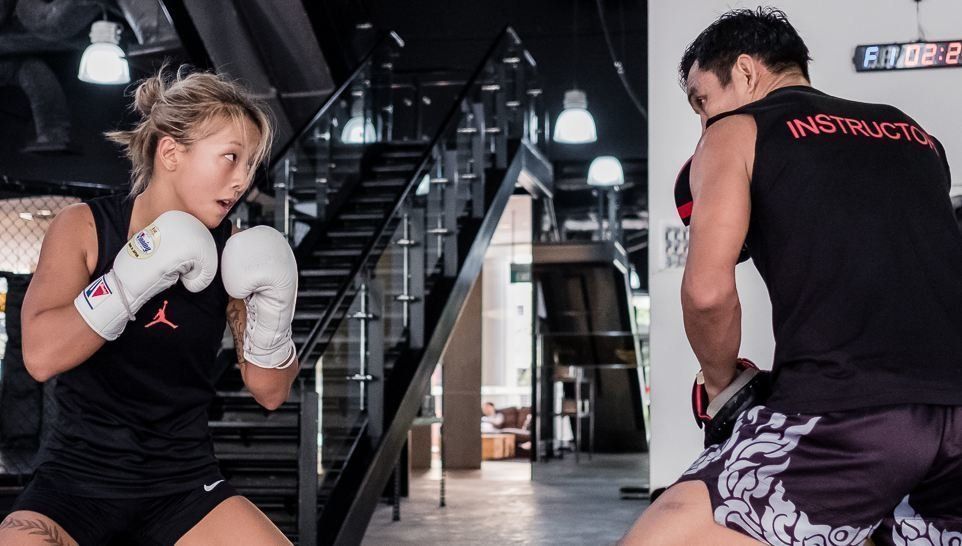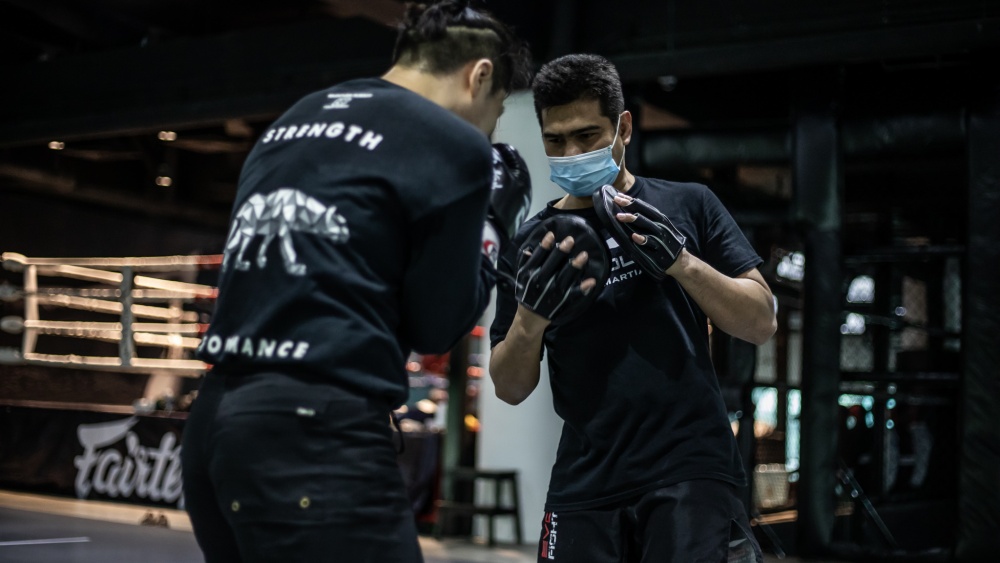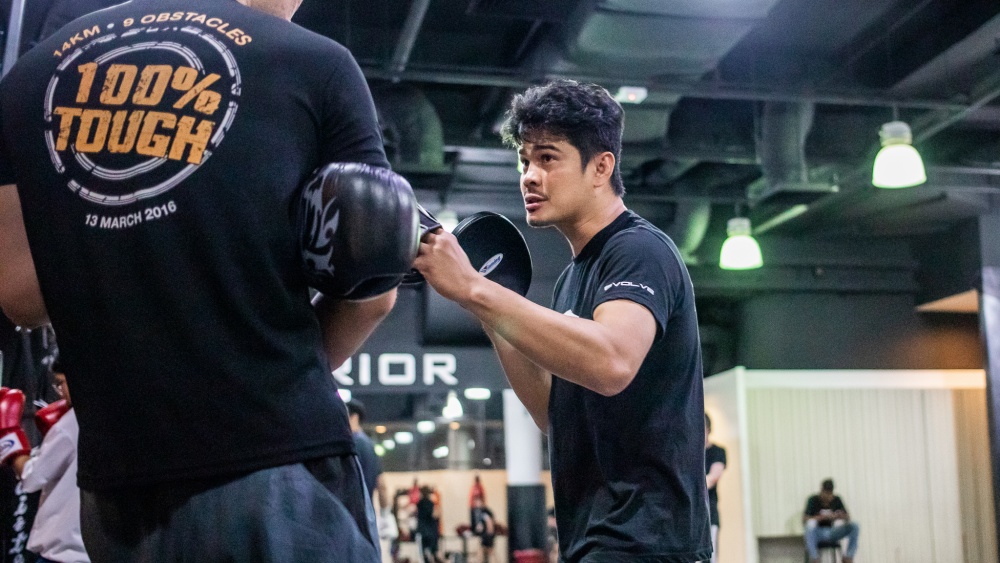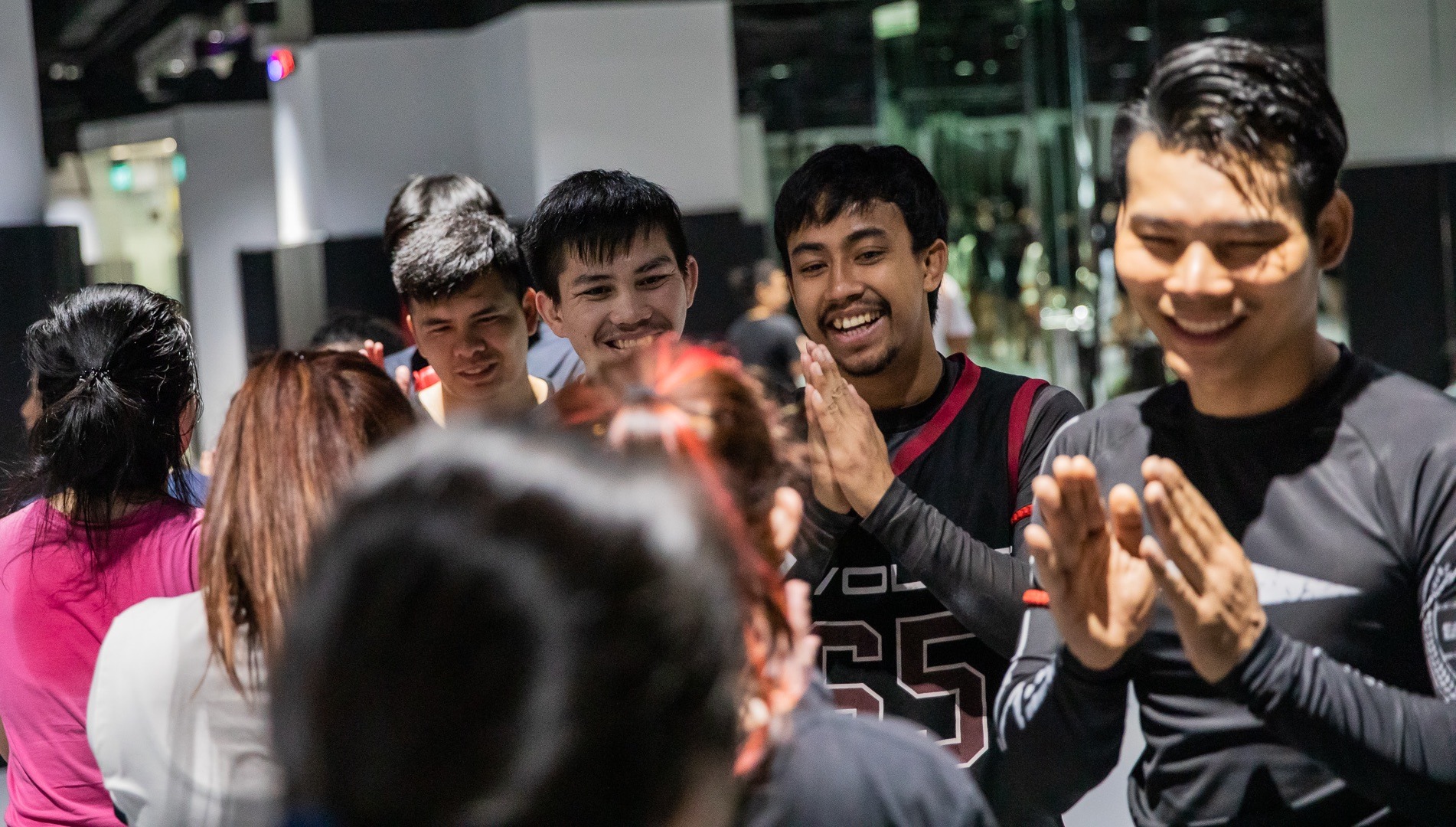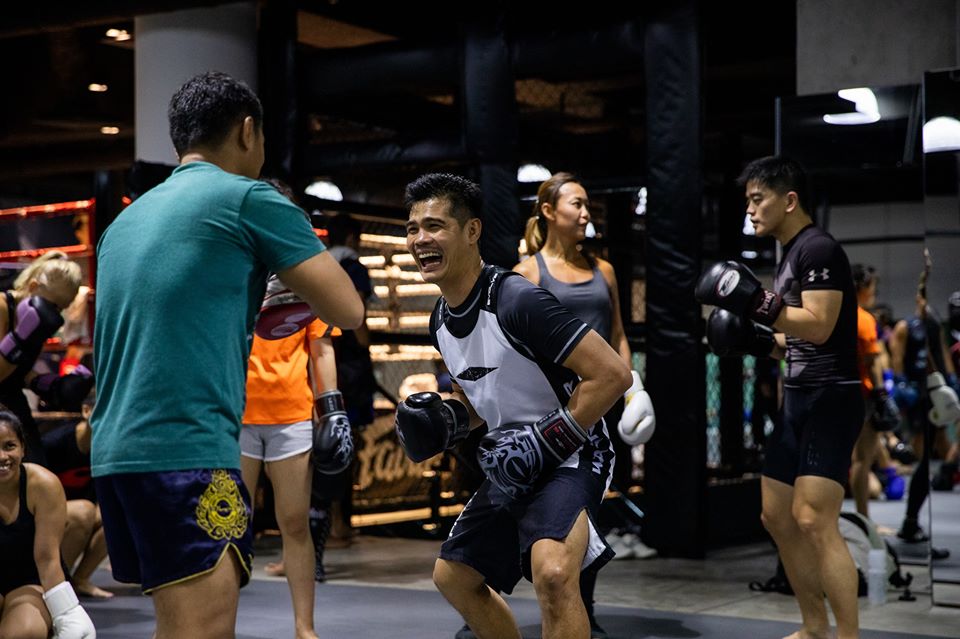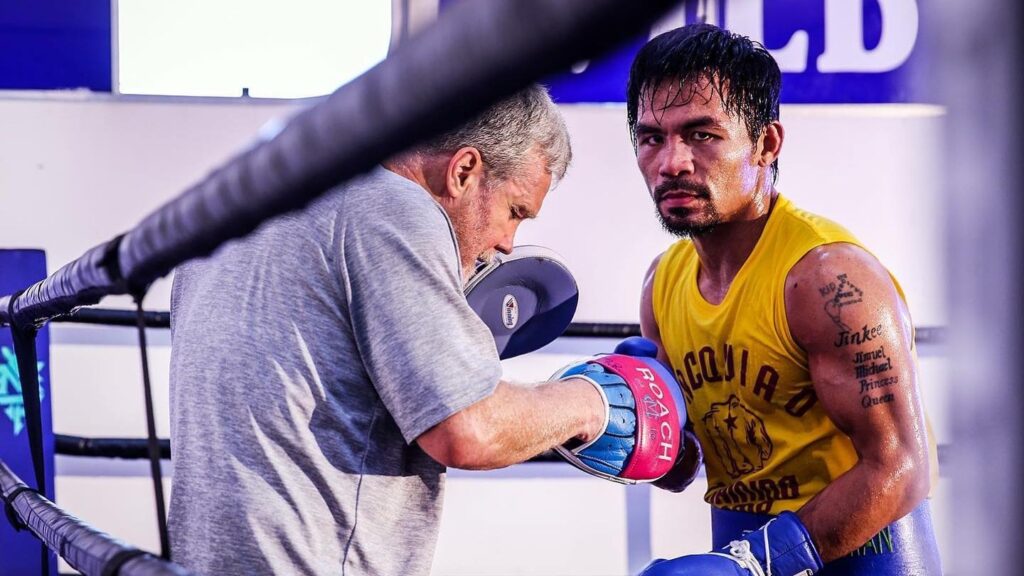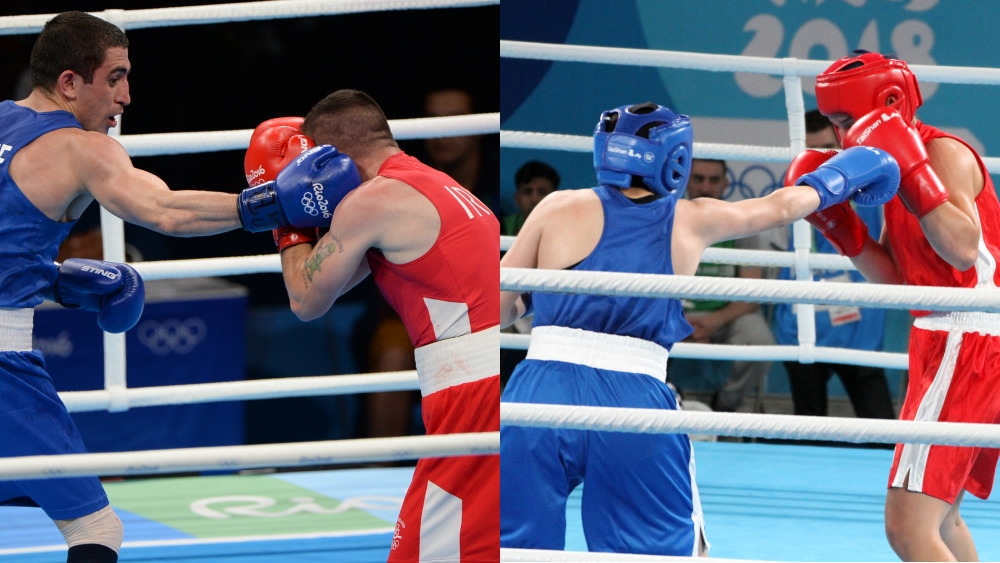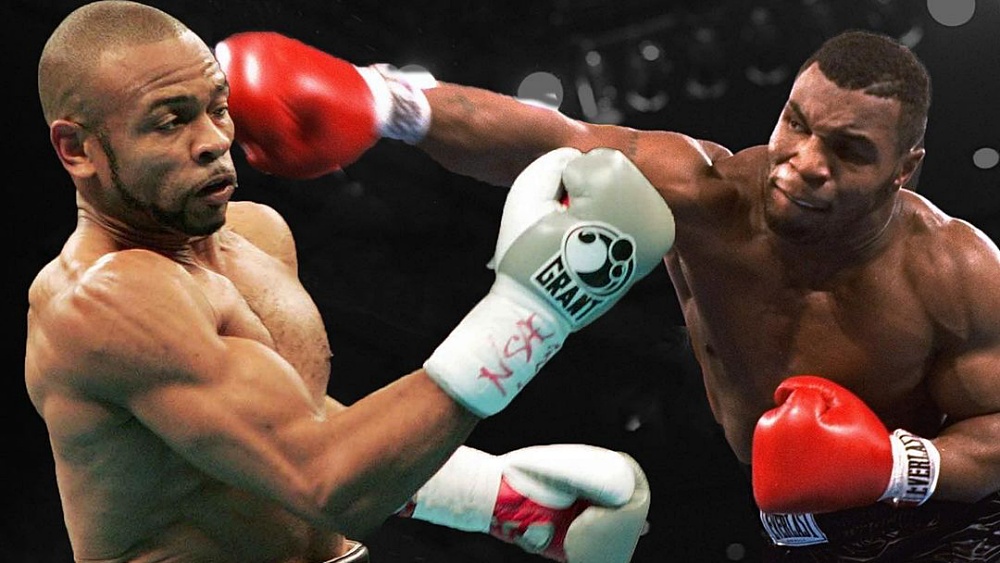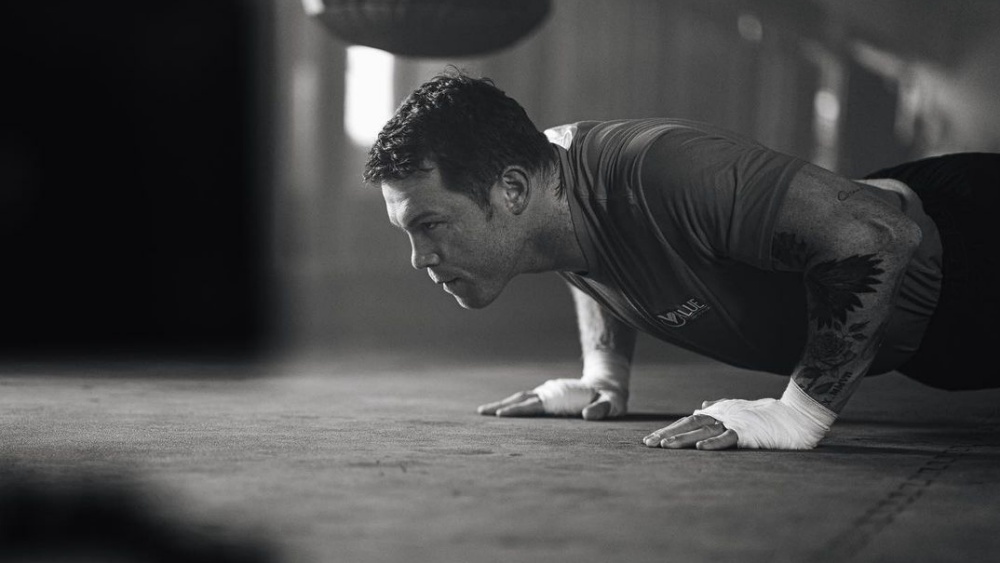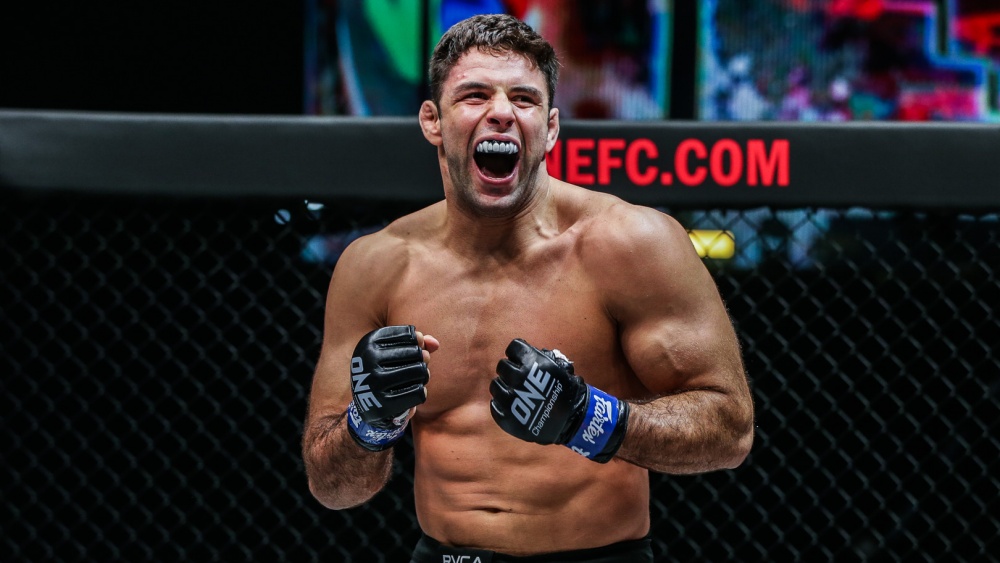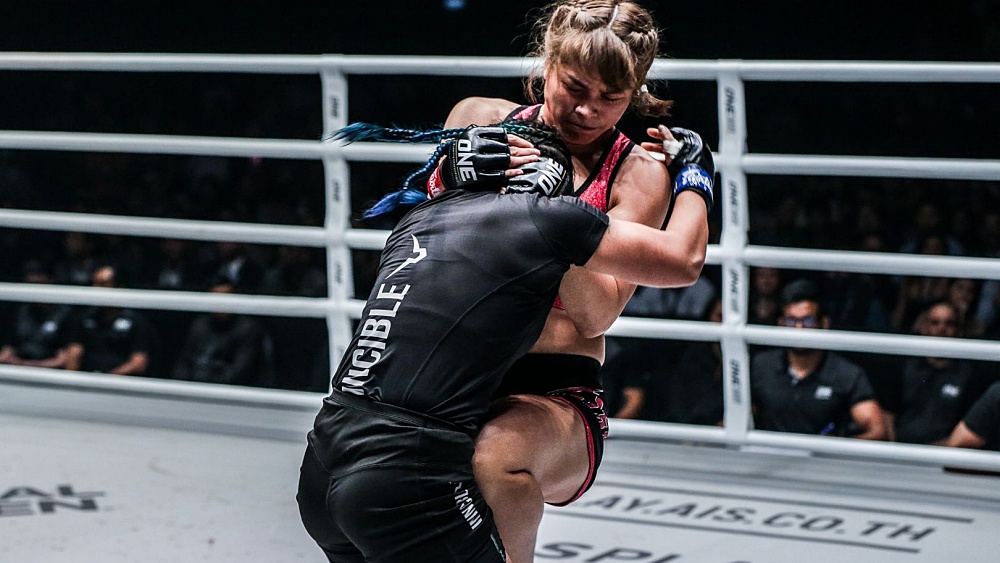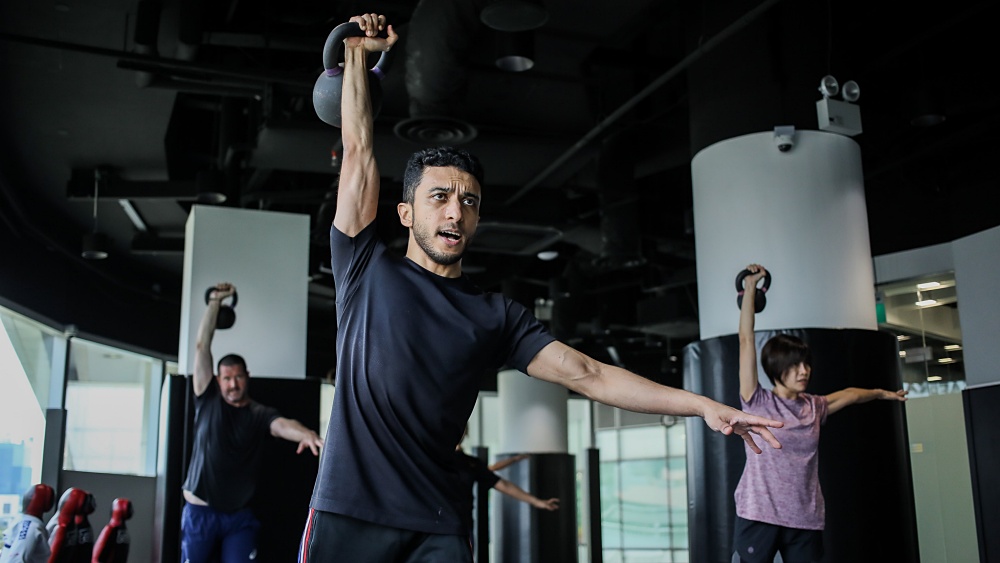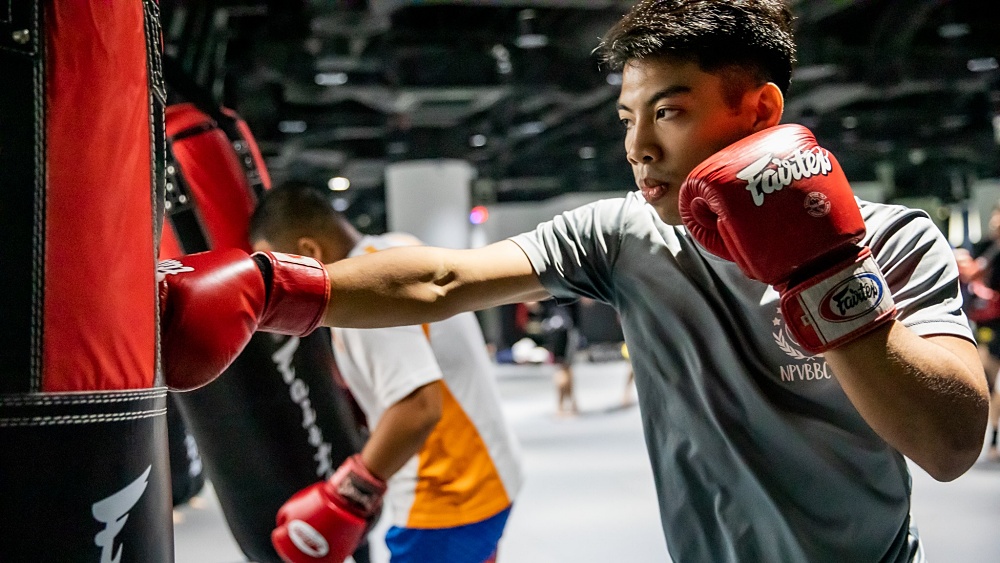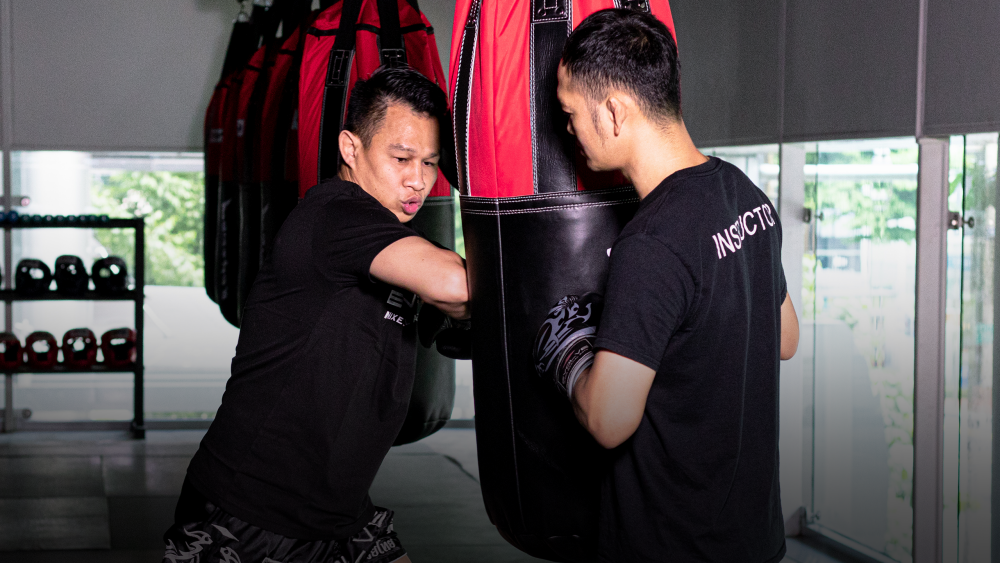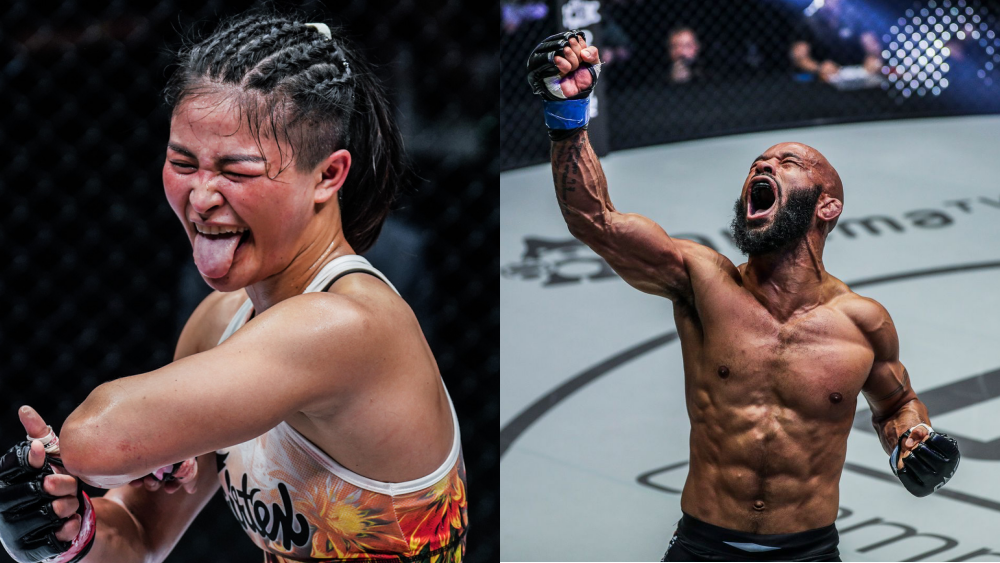Boxing is one of the easiest and most accessible martial arts disciplines to pick up and learn. Beginners can step into the boxing gym and learn all of the basic punches on the very first day. But while the learning curve isn’t particularly steep, mastering the basics and advancing through training requires extra focus and dedication.
To start off, practitioners must completely reprogram their bodies to move in certain ways. From the head all the way down to the feet, boxing requires an acute attention to detail in every technique. The more time you have to practice, the better.
While the majority of focus in boxing lies in its punching and combinations, there are other factors that are introduced when you reach the more advanced stages of training.
When you get to that next level, you’ll shift focus to other equally important facets of the game that need your attention — things like head movement, defense, and the all-important footwork.
People learn at their own pace. Some are fast learners, while others take a little longer to grasp specific concepts. Obviously, the more effort you put into training, the better you will understand the different techniques, and the quicker you will pick things up.
If you’re new to the sweet science or are planning to take up boxing soon, we’ve listed down a few pointers to help set you on the right path of learning. These tips will aid you in your boxing journey and will help maximize your time and effort.
Today, Evolve Daily shares 23 tips to be a better boxer quickly.
1) Master The Fundamentals
A lot of people forego training the fundamentals, when it’s exactly the fundamentals they should be focusing on. Boxing is a lifelong commitment to training. By getting a good grasp on the basics and learning the fundamentals, you put yourself in a tremendous position to succeed. The importance of paying attention to basic skills and techniques cannot be overstated.
Learn how to throw textbook punches with the proper form. Discover the most commonly used punching combinations, and how to defend against them. Learn how to move your feet and use footwork to glide across the ring. All these skills and more will help you learn boxing quickly.
2) Maintain Eye Contact
Never lose sight of your opponent. To better anticipate an opponent’s attacks, and not leave yourself vulnerable to counter attacks that you don’t see coming, maintain eye contact at all times through both offense and defense.
By locking on to your opponent, it means you never break line of sight. In doing this, you can better prepare yourself to react correctly in any given situation. You are virtually one step ahead of your opponent at all times.
The unique ebb and flow of a boxing match can sometimes be chaotic, which is all the more important that you maintain eye contact. Fight smart and you make it easier for yourself to execute your offense while still being able to play good defense.
3) Watch The Battle Of The Feet
Not known to many beginners, but inside the boxing ring, there is a constant battle of feet placement. The general rule is whatever you do, you must keep your lead foot on the outside of an opponent’s lead foot, especially when launching an attack.
Keeping your lead foot on the outside puts you in the right position to unload your offense.
Now, you’re not going to win the battle of the feet all the time. There will be instances when your opponent will win this little mini-game. As soon as you sense your lead foot fall to the inside, be prepared to play defense. Either cover up and employ a high guard, or jab step backward to take yourself out of range.
4) Fight Low
When dealing with taller opponents, sometimes it’s good to keep a low stance. This means bending your knees an extra bit to minimize the impact of a taller opponent’s punches. The taller opponent usually has to exert extra effort in trying to connect punches on a fighter who keeps his stance low.
It can be very effective at times, but also be wary of the effect it has on you.
Be careful with fighting low too long as it easily dissipates your stamina and energy reservoir. Make sure that you train your legs heavily to be able to sustain this sort of activity. Squats and calf raises are good workouts to build stamina in the legs.
5) Use Your Side Step
Sidestepping around an opponent can be used on offense or on defense. It’s a boxing technique that has been underutilized until just recently when fighters like Vasyl Lomachenko and Manny Pacquiao made good use of the tactic.
Sidestepping works great on defense as it allows you to circle away from your opponent’s power shots. Oftentimes it keeps you well out of range of the straight, or the rear hook. Even if contact is made, the impact is lessened.
On offense, sidestepping an opponent makes his defense vulnerable and creates a lot of openings for you to land punches to the body and to the head. This also relates to point number one, as it breaks an opponent’s line of sight. When you move to the side, your opponent is usually wide open.
6) Learn How To Clinch
When the going gets rough, learn how to clinch. It’s a boxing technique that is used in close quarters to provide a break in the action. Clinching is an essential skill that can prove useful in dire situations. As part of a strategy, it can also be used to frustrate opponents mentally.
Opponents who wind up getting clinched a lot in a fight gets the energy zapped out of them quickly. It’s a great way to thwart their game plan.
Knowing how to execute a smooth clinch is a skill that can be trained, just the same as your regular boxing combinations. So practice clinching in sparring as much as you can, to add this technique to your repertoire.
7) Focus On Technique, Not Power
Here’s How To Increase Your Punching Power!
WBA Boxing World Champion Drian Francisco from the EVOLVE Fight Team demonstrates how to increase your punching power!
Posted by Evolve MMA on Tuesday, December 24, 2019
The knockouts will come, but especially as a beginner in this sport your primary focus should be tightening up your technique. By having sound technique, you ensure that you are maximizing the potential behind each punch.
Every martial artist will tell you that there is always some area of your game that you can improve upon. Whether that’s making your punches shorter, or better selling your feints, technique is the most important thing you should enhance as a fighter.
Too many beginners focus solely on increasing power, or trying to punch as hard as they can, which really only wastes energy. By focusing on technique over power, you gain better energy expenditure, and you make every move count.
8) Pick Your Spots, Be Mindful Of Energy Expenditure And Don’t Waste Your Punches
It is also important not to throw punches for the sake of throwing them. You must always keep in mind that every punch you throw expends energy, and you only have so much energy to use up in each fight. It is very tempting to go on an all-out relentless attack, but doing this will cause you to punch yourself out.
Boxing is both an aerobic and anaerobic physical undertaking. The more punches we throw at a rapid pace, the harder our cardiovascular system works to keep blood flowing. At about 80% of our maximum heart rate, which is normally how hard we work during a fight, lactic acid starts to accumulate in our muscles.
If we throw too many punches, we breach our lactic acid threshold. The effect of this is that we are unable to lift our arms, and our punches moving forward begin to lack power. This is why some boxers who aren’t particularly well-conditioned can appear extremely tired after just a few rounds.
One way to make sure that we don’t experience this is by being mindful of our combinations. Don’t just throw your combinations for the heck of it, make sure every move you make serves a purpose. It is important to throw punches in volume, but also to not waste energy by throwing wasteful punches.
Look for openings that may uncover during fights. Use your jab to keep your opponents constantly engaged, then attack with your power shots when they let their guard down. Advanced boxers also love to use feints, which is a tremendous technique that doesn’t require a lot of energy but is really effective in creating openings.
Boxing World Champion Drian Francisco Shares The Secrets To His Success https://t.co/roIhOu8wmr #EvolveMMA #Boxing pic.twitter.com/WQ18tgZQpL
— Evolve MMA (@EvolveMMA) October 27, 2019
By being smart with your offensive and defensive output, you will more often than not be much more effective than your opponent when it comes to areas of punching accuracy, and energy expenditure.
9) Try Not To Get Hit
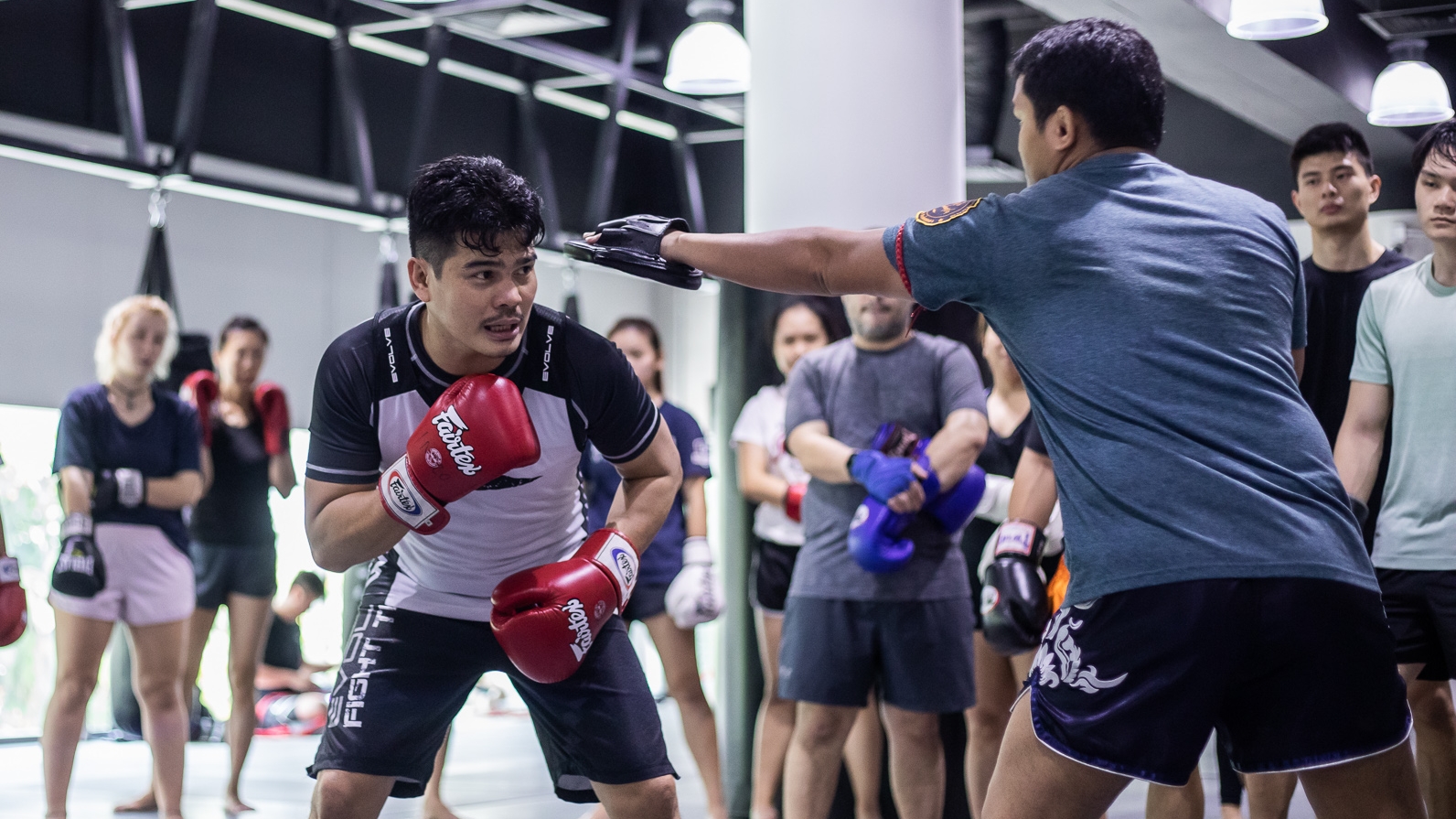
WBA Boxing World Champion Drian Francisco teaching a boxing class at Evolve MMA (Far East Square) in Singapore.
The name of the game is to hit and not get hit. Too often, beginner boxers forget this very basic concept.
Defense is a huge part of boxing, and many boxers, especially beginners, tend to forget this. Moreover, you don’t want to be taking too much punishment, nor get hit in the head too much. Every punch you absorb sucks away at your energy and stamina, and it slows you down over the course of a bout.
How To Set Up And Land A Perfect Liver Shot In Boxing https://t.co/JRvKXG5vee #EvolveMMA #Boxing pic.twitter.com/8gwrxrpa1s
— Evolve MMA (@EvolveMMA) October 17, 2019
The primary objective should always be to land your combinations while sustaining the least amount of damage. They don’t call boxing ‘The Sweet Science’ for nothing. A lot of technique goes behind every movement.
Learn to master the art of defense and mix it up with your offense to create a seamless fighting style.
10) Don’t Throw The Same Punch To The Same Area
The beauty of offense in boxing is that there are so many different combinations that we can work with. There are basic combinations like the 1-2, and the hook-straight, and then there are more advanced combinations. The key to diversifying your offense is mixing it up. In boxing, punches that land in the legal scoring zones, namely the head and body, are the only punches counted towards a boxer’s merit. This is important because, in boxing, scoring areas are limited.
Punches that land on the arms and elbows are not given any merit, while punches that land on the back and below the belt are illegal moves. This limits the area where boxers can land punches, making it difficult to connect cleanly.
Keeping your punch output varied is the key to great offense. Practice your combinations on the focus mitts, honing proper technique while cultivating power on the heavy bag. When you’re comfortable with the movements, apply your techniques in sparring. Sparring is a great way to get accustomed to the unique ebb and flow of a real fight.
The important thing is to not always throw the same combinations, because, after some point, your opponent will begin to anticipate your offense. Diversify your combinations by constantly going both upstairs and downstairs on your opponent, shifting between targeting both the head and the body. In this way, opponents have a much harder time predicting where your offense will be focused on, keeping them unable to anticipate where your next punch will be coming from.
11) Move Your Head
Good head movement isn’t just a component of defense, it’s also a method of making your punch combinations more unpredictable. Bobbing and weaving from side to side makes you harder to hit, while at the same time, shifts and transfers your weight and momentum with seamless motion.
Moving your head constantly is a trait of a good boxer. It is hard to concentrate on head movement in a fight while having to worry about the many other subtleties in the ring, especially if you are a novice. But concentrating on incorporating solid head movement to your game means you are laser-focused on all aspects of your pugilistic technique.
Furthermore, head movement means you are also less likely to get hit clean. It adds a layer of unpredictability to both your offense and your defense. One way to practice head movement is through the all-important shadow boxing. Stand in front of a mirror while you shadow box and pay very close attention to how you move your head.
12) Learn Positioning
Knowing when to execute your combinations is essential to increasing your punch accuracy. A common pitfall of novice fighters is not being able to properly gauge their distance. Some initiate their combinations from too far out, in the process, they overextend on their punches and are left open to counters. This can be solved by improved footwork and thus better positioning.
Learn how to move your feet to cover distance quickly, closing the gap and getting within optimal punching range. At the same time, focus on your exits because your opponent isn’t just going to sit there and take it. They can and will strike back. It’s best to step back at angles as opposed to moving backward in a straight line. This makes it harder for you to find.
As a general rule of thumb, always circle away from your opponent’s most powerful punch. That way, when they counter with this, the effectivity and power is immensely diminished.
Good positioning is an important part of knowing when to unleash your best combinations. Couple this with amazing footwork and you’ll be dancing circles around your opponents in no time.
13) Shadowboxing
Shadowboxing is more than what its simplistic nature shows it to be. In fact, shadowboxing is one of the most important tools in training for both beginners and advanced practitioners alike.
For starters, shadowboxing has many significant benefits to impart to practitioners. First and foremost, it enhances form and execution, by allowing you to see yourself performing a myriad of techniques in front of a mirror. Secondly, it enhances your speed and fight IQ, while also developing your spatial awareness. Lastly, shadowboxing accustoms you to the unique pace of boxing and teaches you how to move properly
14) Listen To Your Coaches
Once you begin to grow more confident in your abilities, it becomes very easy to think you can do it all by yourself. Don’t fall into the habit of ignoring your coaches and instructors, they are there for a reason. Coaches possess a wealth of boxing knowledge well beyond your years. The wisdom they encapsulate in their minds is essential to your learning and development as a fighter.
Make it a habit to always listen to your coaches in all stages of training. They can see things in your form, notice bad habits you may be developing, and understand every movement you make. When they instruct you to move a certain way or punch a certain way, it’s because they are trying to steer you in the right direction whereas otherwise, you may have deviated from the correct path. After all, they know the common mistakes people make in training because they’ve been there before, and they exactly how to mold and shape you into the potential you possess.
As martial artists, humility is the key to learning. In order to maximize your potential, be humble enough to listen to what your coaches have to say and to do your best to put it into practice. By remaining humble and incorporating their technical knowledge into your game, you’ll no doubt be a great boxer down the road.
15) Participate Fully In Class
Furthermore, it also becomes easy to take the class for granted once you think you have a firm grasp of the basics. Don’t allow yourself to become overconfident to the point where you are too cocky to participate in class, especially with students of a lower level.
Remember that boxing is a lifelong journey. People spend years training in the discipline and have yet to master it. And you always learn something new every day.
Boxing class may appear easy to you, but pay closer attention, and you might pick up a new skill that you may have missed before. If you’re looking for increased challenges, tell your instructors. They know exactly how to make certain drills more challenging for you.
16) Be Punctual For Class
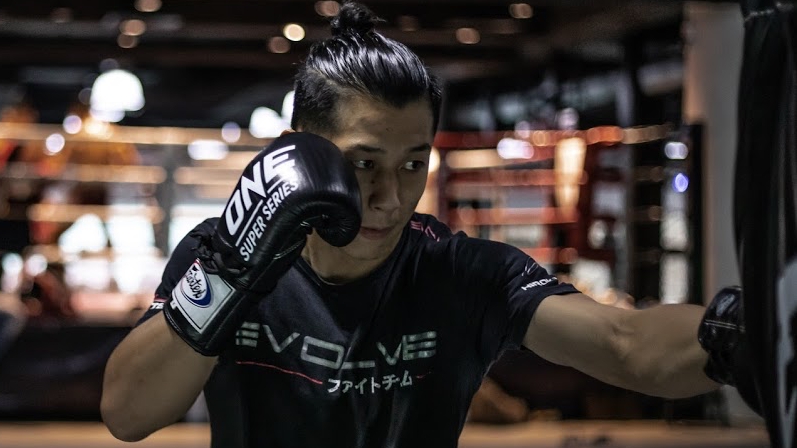
Kyokushin Karate World Champion Hiroki Akimoto from the EVOLVE Fight Team trains boxing at Evolve MMA (Far East Square) in Singapore.
Punctuality should be the norm in everything, but especially if you want to have a good experience in the boxing gym. No instructor appreciates a student who arrives late for a class, so always strive to show up a few minutes early. It’s the first sign of respect. Also, being punctual shows commitment.
Being late will cause you to miss those precious few minutes of training, where you could have learned something valuable. More importantly, tardiness interrupts the flow of every session, not to mention that it’s terribly distracting.
There will be times you are late. You can never achieve perfect attendance, that’s understandable. But try not to make it a habit.
17) Show Respect
Respect is one of the biggest words in martial arts, and it’s the same in the boxing gym. In general, you want to treat others the way you want to be treated. Being respectful to not only your coaches, but also your teammates is the way to go.
As always, leave your ego at the door. Don’t go into the gym acting like you know everything. Even the most advanced practitioners are always learning something new, despite having trained for years.
It’s easy to become too overconfident in your skills when you start to get better. Don’t fall into that trap.
18) Get Ample Sleep The Day Before Training
Again, another basic necessity, but nonetheless important. Getting ample rest and sleep the day before training (or every day, for that matter), is so essential to having a good training session.
Sleep is the body’s time to rest and recover after a long day at work, or a hard day training at the boxing gym. It’s the reset button for both the body and the mind. Lack of sleep will leave you feeling lethargic, whereas being fully rested will ensure you are sharp and focused.
Boxing training requires complete effort from the body and mind, which is why getting enough sleep is crucial to your success.
19) Make Friends In The Gym
It might not seem like the best place to make new friends, but it is. When you join a boxing gym, that means you will be spending a lot of time there. It then becomes obvious that it’s best to get to know the people you’re in there with.
Having a solid support system, people you can trust that will uplift you when you’re down, motivate you when you don’t feel like moving at all, can make a world of difference.
People often think that boxing is a solo journey, that you work out alone in a dark, musky gym as you see in the movies. That’s far from reality and totally not the case. In truth, boxing is a team sport. Everyone — from your coaches to your sparring partners, to strangers you’ve only just met in class — will help you become a better boxer.
Get familiar with your instructors, your gym mates, the staff, and everyone you will come in contact with. The quicker you make friends in the gym, the faster and easier it is to share progress.
Some of the friendships you build in the boxing gym are for life, and your gym mates become your closest allies.
20) Don’t Skip Conditioning
Conditioning plays a vital role in boxing, which is why a lot of the workouts involve improving your conditioning overall. Workouts like running and jogging, light resistance training, the agility ladder, and even skipping rope, all play an important part in your overall boxing regimen.
Being in a great physical condition is a prerequisite of being a boxer. The more physically fit you are, the more physically capable you are of performing certain movements, the faster and more powerful you become. You can go further in training and really push yourself to the limit.
All of this works together to make you a better boxer and fighter. So don’t skip the physical conditioning aspect of boxing, even when it’s so tempting.
21) Consume Boxing Content
What to do outside of the gym? One of the best ways you can learn boxing quickly is by consuming loads of boxing content. Become a fan of the sport, and guzzle up every boxing video you can find on the internet.
A host of boxing tutorials exist on YouTube, teaching you everything from basic punches to advanced combinations. Fight breakdowns allow you to better understand key moments in a given fight.
Sometimes you may just want to watch boxing to enjoy some fun fights. The fastest way to learn how to box is to make it a part of who you are.
22) Study Boxing History
Boxing has existed for decades, and there have been many incredible fights scattered throughout history.
From Filipino superstar Manny “Pacman” Pacquiao’s epic rivalries with Marco Antonio Barrera, Erik Morales, and Juan Manuel Marquez, Mike Tyson’s heavyweight exploits, Roy Jones Jr.’s incredible prime years, to the next generation of fighters like Ryan Garcia and Gervonta “Tank” Davis, boxing enjoys a very rich history with loads of fights you can study.
You don’t have to become a boxing historian. But maybe just watch the most recommended fights to better understand how boxing has evolved throughout the years.
23) Emulate Legends
https://www.youtube.com/watch?v=W_E9OD5-x0c
If you want to understand how Floyd Mayweather Jr.’s shoulder roll works, you have to watch the man in action. If you want to add Muhammad Ali’s flicker jab to your arsenal, you have to witness how he does it.
Fortunately for us, we live in a digital age where this information is now so easily accessible.
Like studying how Michael Jordan pulls off his patented fadeaway jumper and then trying it yourself on the court, you can learn boxing by emulating legends and then applying their techniques the next time you’re in training.
You may also like:

